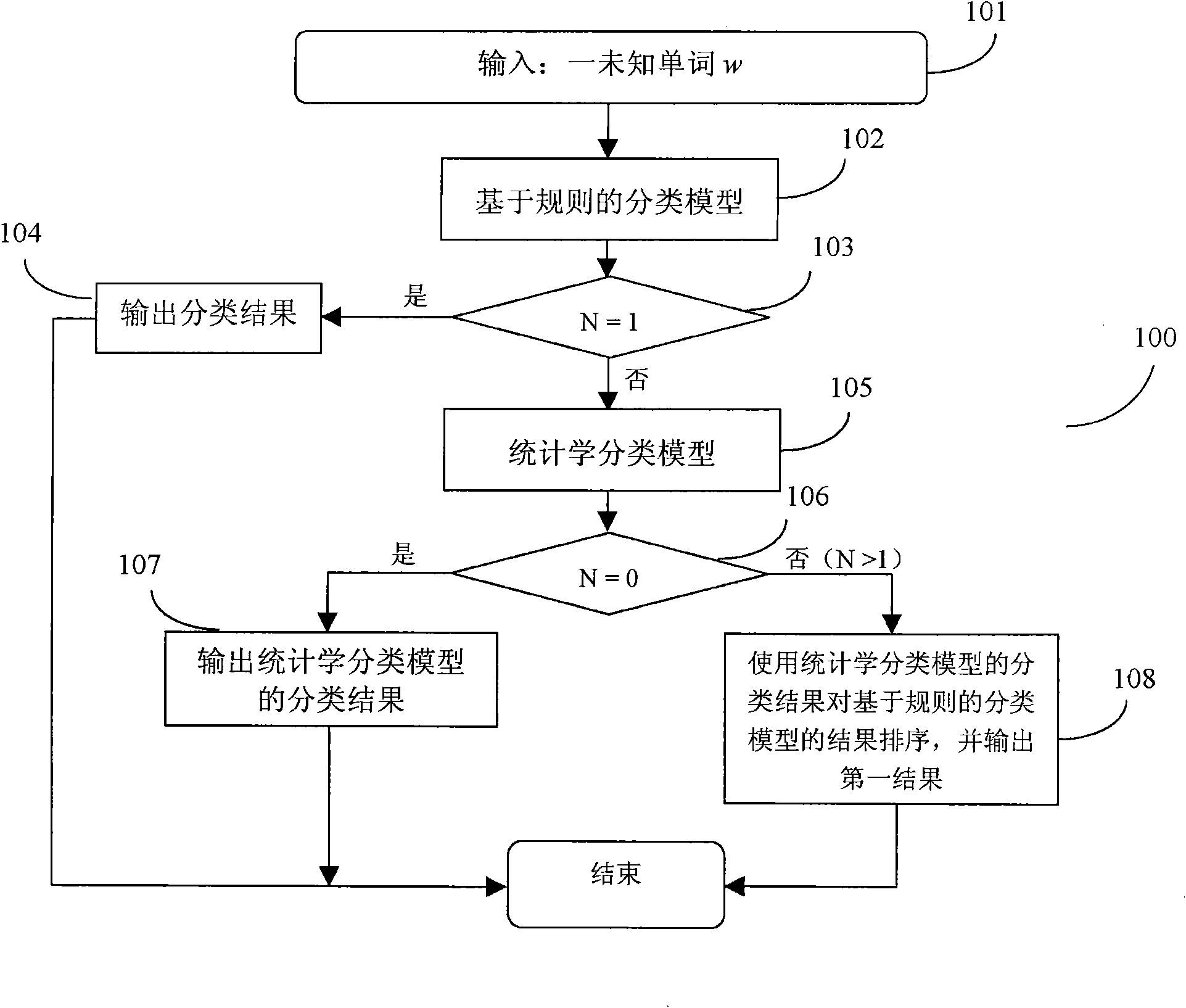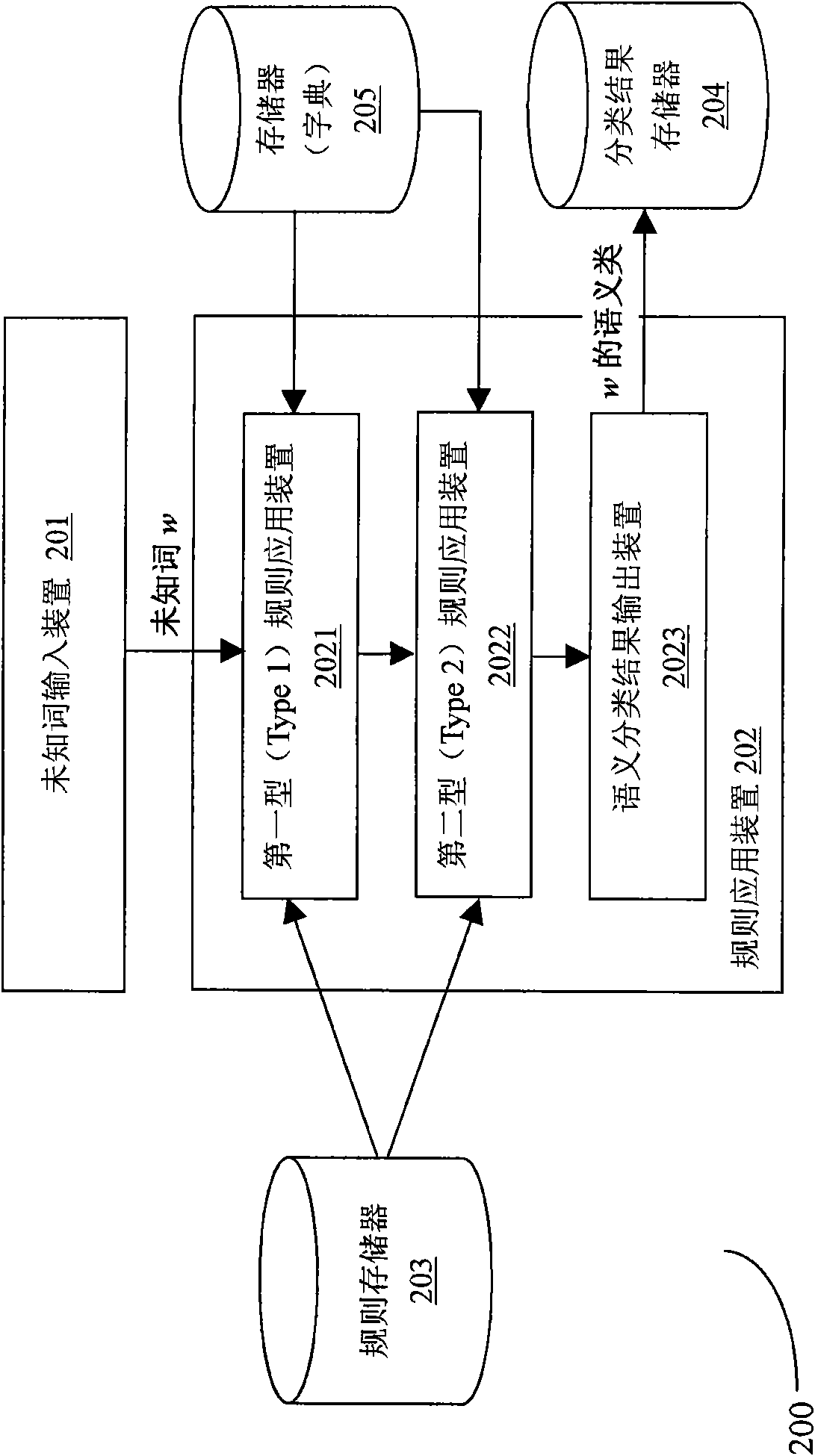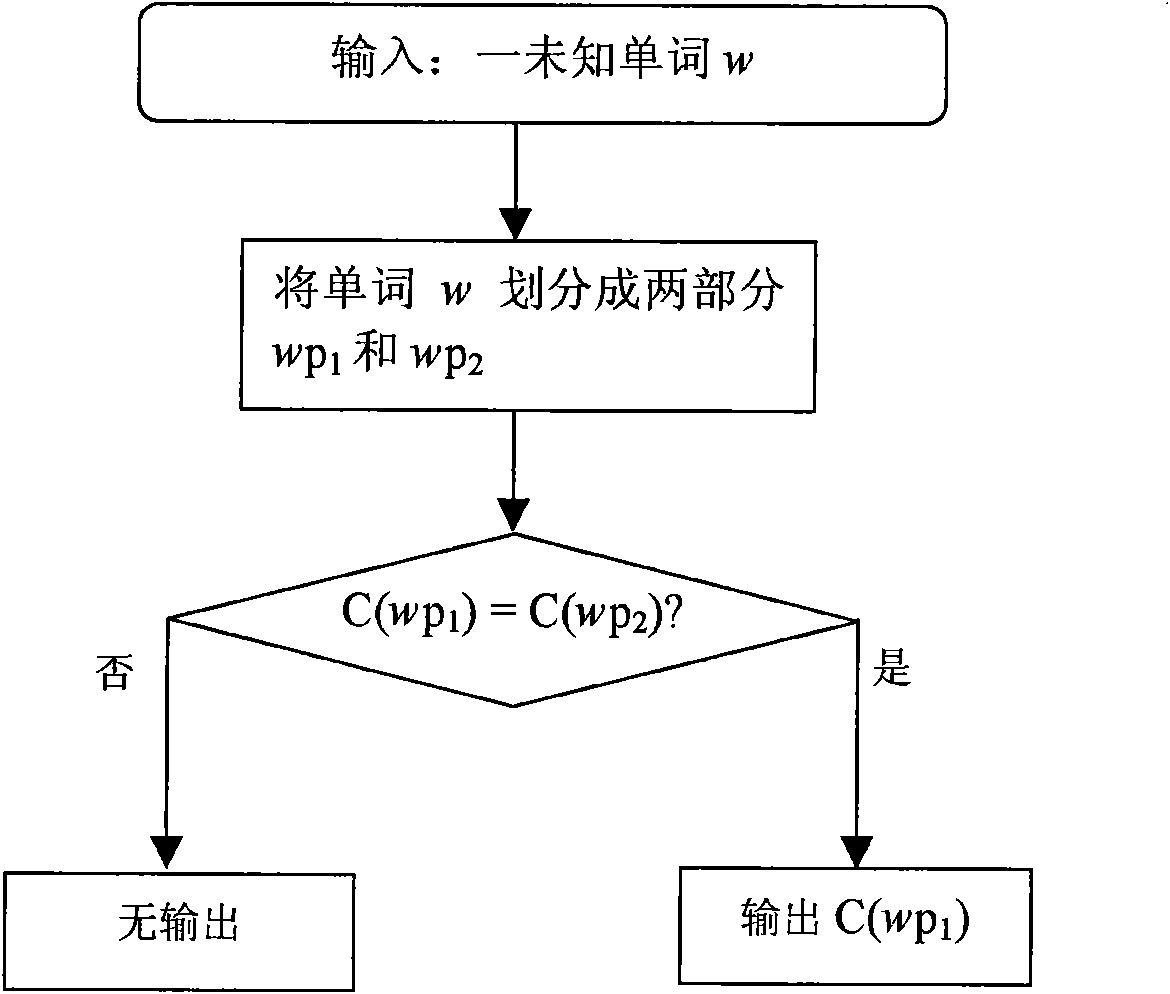System and methods for carrying out semantic classification on unknown words
A technology of unknown words and semantics, applied in the field of natural language processing, can solve problems such as unobtainable performance and reduced classification accuracy, and achieve the effects of saving time, large coverage, and improving work efficiency
- Summary
- Abstract
- Description
- Claims
- Application Information
AI Technical Summary
Problems solved by technology
Method used
Image
Examples
example 1
[0078] Example 1: Suppose an unknown word "muscle" is input. The similar word retrieval means 1202 can retrieve the similar word "skin and flesh" from the dictionary. Comparing its different parts "muscle" and "skin", C(muscle)=C(skin)=c. Since C (skin and flesh)=c is known, it can be determined that the semantic class to which the unknown word "muscle" belongs is also c, that is, C (muscle)=c.
example 2
[0079] Example 2: Assume that an unknown word "vegetable" is input. The similar word retrieval means 1202 can retrieve three similar words "green garlic", "green beans" and "green hemp" from the dictionary. And, these three similar words all satisfy following condition: C (vegetable)=C (garlic)=C (green garlic)=c1, C (vegetable)=C (bean)=C (green bean)=c1, C (vegetable) =C (hemp)=C (green hemp)=c2. That is, in this case, for the unknown word "green vegetables", there are two different classification results. As mentioned above, in this case, the result selection means 1204 can select one of the results by voting. Since the words green garlic and green beans both support the c1 category, and only the green ma word supports the c2 category, the unknown word "green vegetable" is classified into c1 by voting.
[0080] The three semantic classification methods for unknown words according to the first, second and third embodiments of the present invention have been described in d...
PUM
 Login to View More
Login to View More Abstract
Description
Claims
Application Information
 Login to View More
Login to View More - Generate Ideas
- Intellectual Property
- Life Sciences
- Materials
- Tech Scout
- Unparalleled Data Quality
- Higher Quality Content
- 60% Fewer Hallucinations
Browse by: Latest US Patents, China's latest patents, Technical Efficacy Thesaurus, Application Domain, Technology Topic, Popular Technical Reports.
© 2025 PatSnap. All rights reserved.Legal|Privacy policy|Modern Slavery Act Transparency Statement|Sitemap|About US| Contact US: help@patsnap.com



